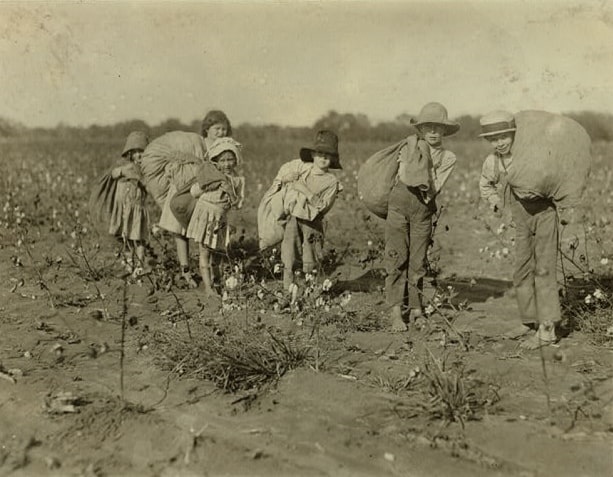Introduction: In this article, Katie Rebecca Garner concludes her two-part series giving tips how to find information about children in your family’s history who died young. Katie specializes in U.S. research for family history, enjoys writing and researching, and is developing curricula for teaching children genealogy.
Yesterday’s article covered why it is important to search for children that may be missing from your family records, and how to identify if a family may have had children that died young, and therefore haven’t turned up yet in your research. This article will go over ways to search for potentially missing children.

Finding the Missing Children
When you suspect a family had children that are missing from your family research, the next step is to find records of them. This can be tricky because there is no way to know the names of the missing child(ren). Unless there is a source (such as the 1900 or 1910 census) indicating the family had a deceased child at that time, there is no way to be certain that there even is a missing child.
The most obvious place to look is in the family Bible, if one is accessible for the family in question. If the family kept a family Bible, they would have marked the names and birth dates of all their children, including the ones that died young. If the father served in the military and the family later filed for a pension, the family Bible page may have been used as evidence of marriage or dependents in the application. The family would have ripped that page from their Bible to send it in, and it would be available with the pension records.
Another place to search is cemeteries, if any family member’s burial place is known. Family members tended to be buried near each other in the same cemetery. In the case of children who died young, the family members most likely to be buried in the same cemetery are the parents.
This was the case with research I did for Anna Davidson, who was listed as a widow on the 1900 census; according to that census, she had given birth to eight children and three were living. This meant that five deceased children needed to be found. Her death certificate stated that she was buried in Vogansville cemetery, and I found her memorial on Find-A-Grave. A search on Find-A-Grave within Vogansville cemetery for the surname “Davidson” and no given name found all five of her children who died young. In this case they were easy to identify because the gravestone inscriptions for all of them included “son of James and Anna Davidson” or “daughter of James and Anna Davidson.”
Not everything is online, so it may be helpful to contact the cemetery or funeral home where the family is buried for additional information on the family. If a plat map is available, that would provide information on who is buried next to whom, which can help in extrapolating possible relationships.
Another place to search is an online collection of newspapers, such as GenealogyBank’s Historical Newspaper Archives, as the family may have posted a death announcement for their little one. Search for the family’s surname in the area the family lived, and in the timeframe of when a child may have died. If an obituary is found, it will not only give the information to identify the missing child but may also give a glimpse into the sadness felt by the family at that time.
Church records are also a good place to search. If the child lived long enough to be baptized (varies by denomination), there would be a baptism record. There may also be a burial record. If the religious denomination of the family is known, look for any church records of children of the parents. Search the surname in any records available online. Browse through the records of the time range when the couple may have had and lost a child. If the religious denomination of the family is unknown, search every church in their area. Not finding missing children in church records does not necessarily mean there are no missing children; it could be that the child did not live long enough to be baptized and the church only recorded baptized children.
Not all church records and newspapers are available online, so a search may involve ordering microfilm or contacting archives to request records.
If the child died after their state started civil registration, vital records are a possible place to search. Search by the surname or by the parents’ names. For example, Francis Obermeier had lost a child by 1900, according to that census. I searched Wisconsin vital records and found an online index to a birth record; the index had enough information to order a copy of the original birth record. The record was for a baby girl who had not been given a first name.
By seeking out the children who died young, their memories are honored, and the records of their families are more complete.
Are all the children in your ancestors’ families accounted for? If not, search census records, family Bibles, cemeteries, old newspapers, church records, state archives and vital records to try to fill in those gaps on your family tree.
Related Article:

This article was a very interesting two-part post. Gave me another level of family to look for. I had three grandaunts that were married but never had children that I know of.
I wish you luck in finding out if those grandaunts had children!